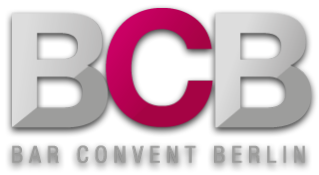The New Approach To Spirits-Free Drinks
© Shutterstock
Bar ohne Namen
Entschlossen verweigert sich Savage, der Bar einen Namen zu geben. Stattdessen sind drei klassische Design-Symbole das Logo der Trinkstätte in Dalston: ein gelbes Quadrat, ein rotes Viereck, ein blauer Kreis. Am meisten wurmt den sympathischen Franzosen dabei, dass es kein Gelbes-Dreieck-Emoji gibt. Das erschwert auf komische Weise die Kommunikation. Der Instagram Account lautet: a_bar_with_shapes-for_a_name und anderenorts tauchen die Begriffe ‘Savage Bar’ oder eben ‚Bauhaus Bar‘ auf.
Für den BCB bringt Savage nun sein Barkonzept mit und mixt für uns mit Unterstützung von Russian Standard Vodka an der perfekten Bar dazu.
There have always been many legitimate and admirable reasons for people not drinking alcohol in bars: pregnancy, drink driving rules, addiction, disliking the taste of alcohol, religious or legal restrictions and so on. And while bartenders around the world have accepted these reasons and people with all (mostly) good grace we generally found the drinks a bit boring and to be honest so did the drinkers themselves. A melange of fruit juices with maybe some ginger or mint smashed in. Tasty maybe but forgettable and too easy to gulp down and never good value for money. Even terminology fore these drinks was vaguely insulting with words like Mock or Virgin in their titles.
Yet the world is changing fast and the world of Non-Alcoholic/Spiritfree/Zeroproof/Spiritless (choose your term of choice) drinks is one of the fastest and most dynamic categories in both the drinks and the hospitality world. Add to that the increasing number of younger people who are either teetotal or drink far less due to a variety of factors (the embarrassment factor of drunkenness on social media or cost). Also add an increasing number of older drinkers who are looking to find something as cool and complex as their boozy cocktail choices to add to their repertoire of drinks to save their livers and extend their nights and you have a perfect pool of possible customers and a perfect storm of creativity. But thankfully its far easier to be far more creative than before.
Perhaps the biggest change is the rise of zero proof brands for the back bar. While bartending may be a credible part of the gastronomic revolution of the last few decades the bar and the restaurant are significantly different in that bars are branded environments. While your average guest may be able to reel off 3-4 gin/vodka/tequila brands most of us would struggle to name 3-4 brands of cheese/lamb/lettuce. Brands are important to guests and so the rise of names like Seedlip, Everleaf, Lyres, Proteau and many others (for a full list see serial BCB presenter Camper English’s list here https://www.alcademics.com/2019/11/non-alcoholic-spirit-brands-list.html ) have made the whole category gain credibility. They generally fall into two categories – the totally new types of liquid or the faux established spirit category. You know when a mega brand like Gordon’s Gin produces a 0.0 abv variant that something big is happening.
Yet there is great contention and debate around some of these brands based around cost (as high if not higher than many spirit brands) and more importantly nomenclature: should a liquid describe itself as “Non Alcoholic Gin” or “Non Alcoholic Bourbon as those categories have strict and precise definitions (including often minimum abv etc). Is it confusing to the guest or disrespevctful to the categories? This debate will rumble on and increase in intensity in the coming months no doubt.
Plus many of the early ones to market frankly lacked the bite or mouthfeel that the liquids bartenders were used to working with bought to the shaker. Add to that narrow distribution channels for most liquids and bartenders began to re-examine what they could do themselves out of choice and necessity.
Thus bartenders started to reach for ingredients like tea which had tannin that gave more complexity to spirit free cocktails. The use of vinegars in the form of shrubs and the like also added edges and sharpness that created a drink that was complex and harder to be able to gulp down quicky which has always been seen as a ‘problem’ for the non-drinker. And the concept of mouthfeel has led to bar tams investigating how to replicate or re-imagine that in a non alcoholic form with honeys and other sugars and chemicals. Maybe it’s due to bartenders opening up their minds to the needs of their non drinking guests or maybe it is down to the guest demanding better non alcoholic options.
Plus not forget Beer and Wine. The range of zero alcohol beer brands has hugely increased with many being indistinguishable from their boozy brothers and sisters and wine makers are catching up fast.
We are in time of great change and disruption and while this Lo-No movement predates the pandemic I foresee a far greater demand for drinks like this in the “New Normal” and I for one and very happy to see it and also see how it has added a new route for bartenders creativity.
